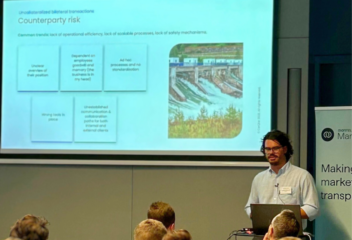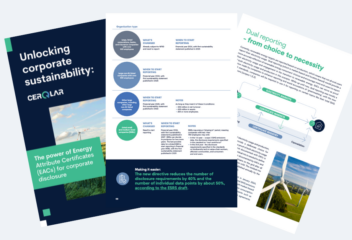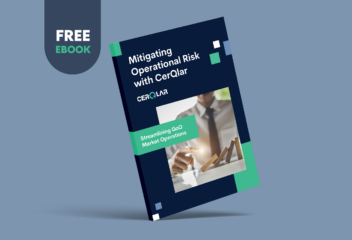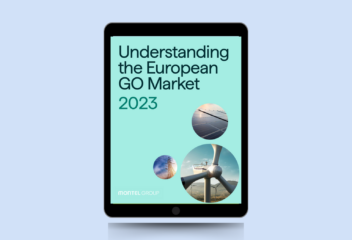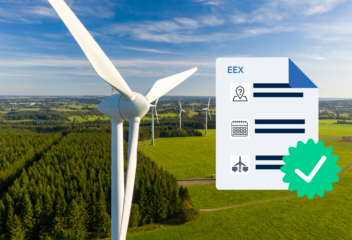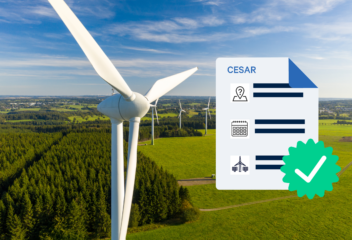What does the future of the GoO market hold? We sat down with Janosch Abegg from Axpo to find out.
Interview with Janosch Abegg, Senior Originator at Axpo Germany
Renewable energy trading is a growing industry that is becoming increasingly important as more companies and individuals look to make a positive impact on the environment. We recently had the opportunity to sit down with Janosch Abegg from Axpo, Switzerland’s largest renewable energy producer and an international leader in renewable energy trading and the marketing of solar and wind power. Janosch was kind enough to share some insights into the current state of the renewable power trading market, as well as trends and challenges in the industry, and where we can expect the industry to go in the future.
Below are some of the questions we asked Janosch and the answers he shared:
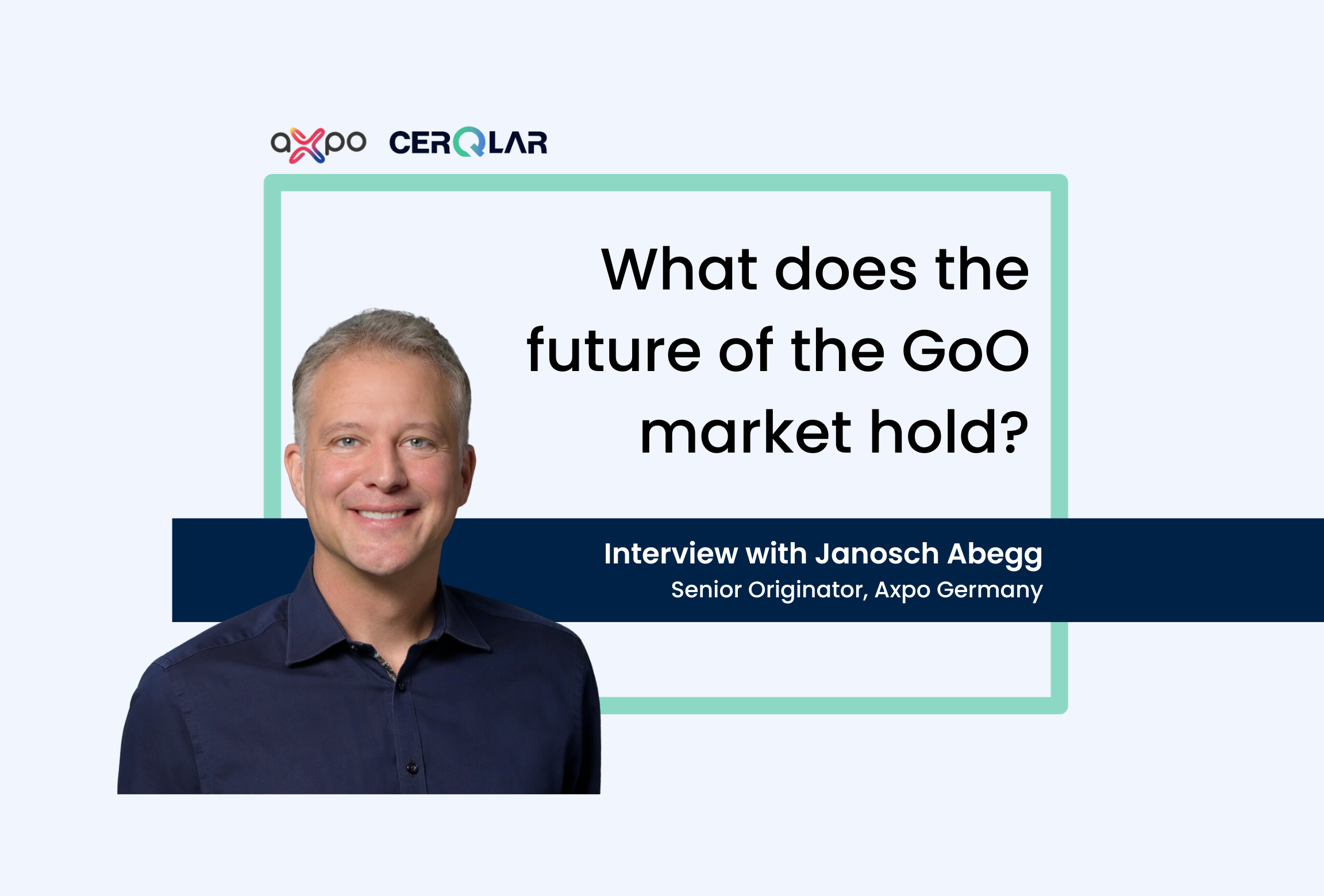
Can you provide an overview of the renewable energy market’s trajectory in 2022, including any significant trends and challenges you’ve noticed?
The most significant development was in line with the trajectory of the general electricity and energy market, namely an unprecedented surge in prices. For renewables with zero fuel costs, this has led to excess earnings margins and, as a consequence, the introduction by EU member countries of a revenue cap. At the same time, Guarantees of Origin (GoO) prices have surged for a number of reasons, including the dry hydrologic situation in the Nordic region.
This fuelled the interest of corporate and large power consumers in long-term green electricity. One side effect was that German renewables producers opted out of the support scheme for a few months, as only then were they allowed to produce GoOs and monetise them. Suddenly, Germany’s guarantees of origin registry, the Federal Environment Agency’s HKNR, needed to process hundreds or thousands of additional renewable plants and their GoOs. This is a new situation, and both registries and market participants are unequipped to handle it.
The CerQlar system addresses this challenge and provides users with a better portfolio overview. Knowing your position is the most important thing in trading!
Janosch Abegg, Senior Originator at Axpo Germany
In your opinion, what are some of the biggest challenges the renewable power trading industry currently faces?
To start on a positive note, the value of GoOs has increased by a factor of ten compared to the long-term average. Now that the commodity is more valuable, it is also worthwhile ramping up systems and logistics, which we need because more buyers and sellers are entering the stage, and they have more sophisticated demands. So, we need to process GoO positions more quickly and securely. Not only to avoid operational mistakes, which are suddenly also ten times more costly than before, but also to deal with the many individual features of what is supposedly a homogeneous product, the GoO.
Although GoOs are defined as European standardised products, renewable power is still very much a matter of perception. Market participants each have their own ideas of what makes a good renewable product, meaning that there is a wide spectrum of what market participants want their renewable products to look like.
One prominent example is the timestamp requirement to prove that a certain timeslot’s energy was produced by renewable sources. Some participants want to emphasise that the power comes from an asset near the consumption site, others require it to come from a newly established plant, while yet others want to ensure all of the above plus a certain technology mix. In reality, the market is filled with a lot of complexity and interplay between systems that are currently less than state-of-the-art.
Looking at the bigger picture, a suddenly more relevant, important, and costly market now has to cope with a lot more producing assets, very different national market specification and, on top of all that, has to meet the different definitions and quality requirements of each market participant.

Do you want to learn about granular certificates? Discover the concept, benefits, and challenges of using them.
Read moreWhat role does Axpo play in the renewable energy market, and how has the company adapted to the challenges and changes in the market?
There are a couple of key things to know about Axpo. First, while still the largest electricity producer in Switzerland, Axpo is a company that has adapted to the reality that Switzerland is a small country closely interconnected with its neighbours. This has led to a strong regional presence and a desire to understand and serve customers in the markets where Axpo operates. Second, Axpo has been successful in developing a prominent role in certain markets earlier than others, especially in the Nordic region. We began concluding power purchase agreements (PPAs) as early as 2005 and have since engaged in many different forms of PPAs across numerous markets. But engaging with the complexity of managing the expectations and different PPAs of various countries across Europe can be challenging, and this complexity is compounded by the difficulty of managing GoOs in Germany and across the German GoO infrastructure. That’s why we’ve enlisted the help of CerQlar to address this pressing issue.
Can you speak to the importance of having a streamlined and efficient system for managing and tracking the various aspects of renewable power trading?
Approaching this from two angles, the first challenge is the market-specific issue of the German registry, which doesn’t cater to the current market’s needs. Many renewable energy sources generate GoOs that are marketed under PPAs, but registries are not user-friendly, and it’s difficult to get an accurate overview. The CerQlar system addresses this challenge and provides users with a better portfolio overview. Knowing your position is the most important thing in trading!
The second advantage of CerQlar is its adaptability to meet our specific needs. It’s difficult to meet everyone’s idea of an ideal renewable product, so we need the flexibility to tailor the system further. This way, we can see our GoO position as well as the GoOs that correspond to specific demands like quality and value expectations. We believe this is crucial for market participants to do their job properly in both the German and European markets.
“Many renewable energy sources generate GoOs that are marketed under PPAs, but registries are not user-friendly, and it’s difficult to get an accurate overview. The CerQlar system addresses this challenge and provides users with a better portfolio overview. Knowing your position is the most important thing in trading!”.
Where do you see the market going in the future, and how are you preparing for it?
There is one trend we’re seeing that I don’t think will revert, and that is the increasing need for industrials and households to have renewable energy consumption so the market will grow in size on the demand side. On the other hand, we have expansion strategies, and EU member countries know that we need more electricity, and we know it needs to be green, so there’ll be growth on the supply side. At the same time, the product has increased significantly in size, and people have become more aware of it.
I’m less optimistic when it comes to standardisation of what constitutes a renewable product. Instead, I think we’ll continue to see many different definitions. I expect a continuation of the developments we’ve seen over the last year, and we just need to prepare to put ourselves in a position that will allow us to cope with it in a professional, reliable, and stable manner.
What advice would you give to companies and individuals looking to get involved in renewable energy trading and make a positive impact on the environment?
For consumers, it’s important to understand the differences, benefits, and risks of renewable products before making any investments. Take the time to identify which PPAs and GoOs will work best for you.
Traders who want to be more active in the renewable market should consider investing in a system to streamline the trade process. It’s worth the investment to integrate a solution into your existing system to avoid confusion and the difficulty of switching later. Investing now will pay off in the long run.
Where to go from here
Thank you, Janosch, for your valuable insights into the renewable energy industry and for sharing your broad experience in the PPA and GoO industries. We have learned about the challenges faced by companies in navigating market-specific structures, and the steps traders can take to mitigate these challenges. While it’s important to be prepared when taking your first steps into the renewable energy industry, using tools such as CerQlar can help simplify the trading process for both industry newcomers and veterans alike.
Learn more about Axpo here.




